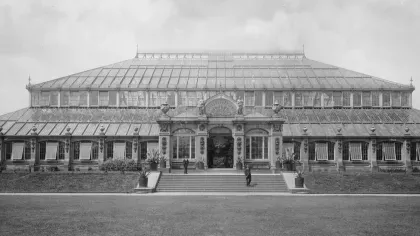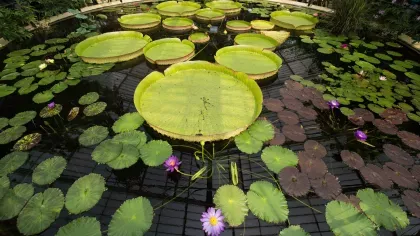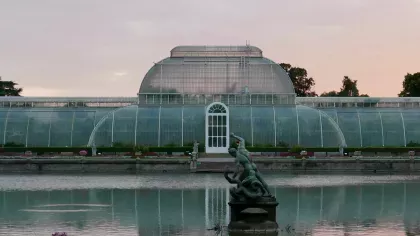11 August 2021
11 things you didn’t know about our Japanese gardens
The highlights and history of Kew’s tranquil Japanese Landscape and traditional Gateway revealed.

1. Peace, Harmony and Activity
Our manicured Japanese Landscape unites a Garden of Peace, a Garden of Harmony and a Garden of Activity.
The first area of Peace is evocative of a traditional Japanese tea garden.
The Garden of Activity sits at the end of the landscape and contains features that symbolise elements of the natural world. Here, raked gravel and large pebbles mirror the movement of flowing water and turbulent waterfalls.
The Garden of Harmony blends the two different scenes and displays big rocks signifying Japan’s mountain regions.
Pause and reflect in our Japanese Landscape this autumn and celebrate the iconic plants, art and culture of Japan.
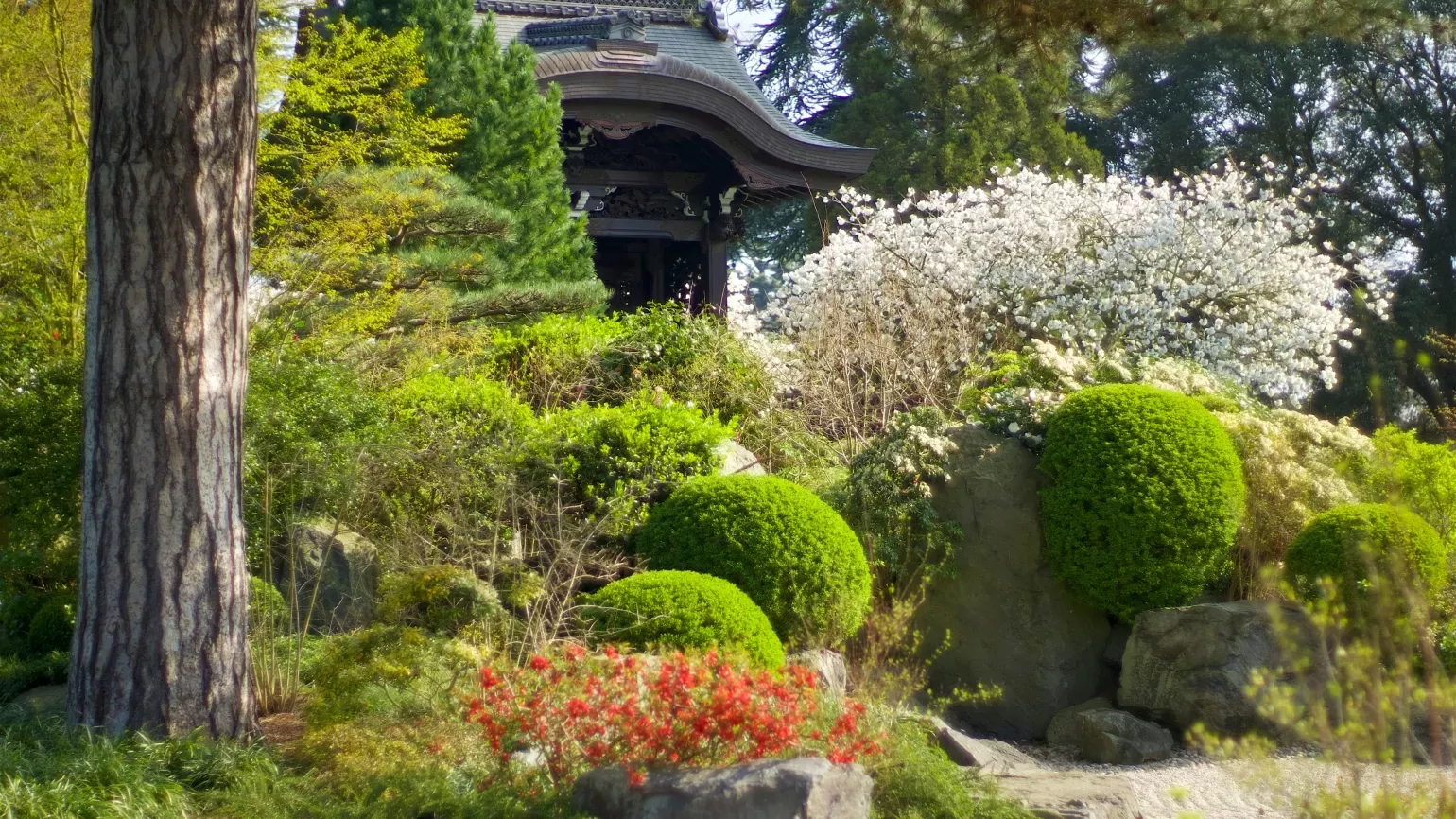
2. The ‘Chokushi-Mon’
Designed by Professor Masao Fukuhara of Osaka University, our Japanese gardens opened in 1996. But the Gateway at its centre has a much longer history...
The ‘Chokushi-Mon’, or ‘Gateway of the Imperial Messenger’, was gifted to Kew after its inclusion in the Japan-British Exhibition of 1910 in London.
The impressive structure is a four-fifths scaled down replica of the Karamon Gate of the Nishi Hongan-ji Temple in Kyoto, once the capital of Japan.
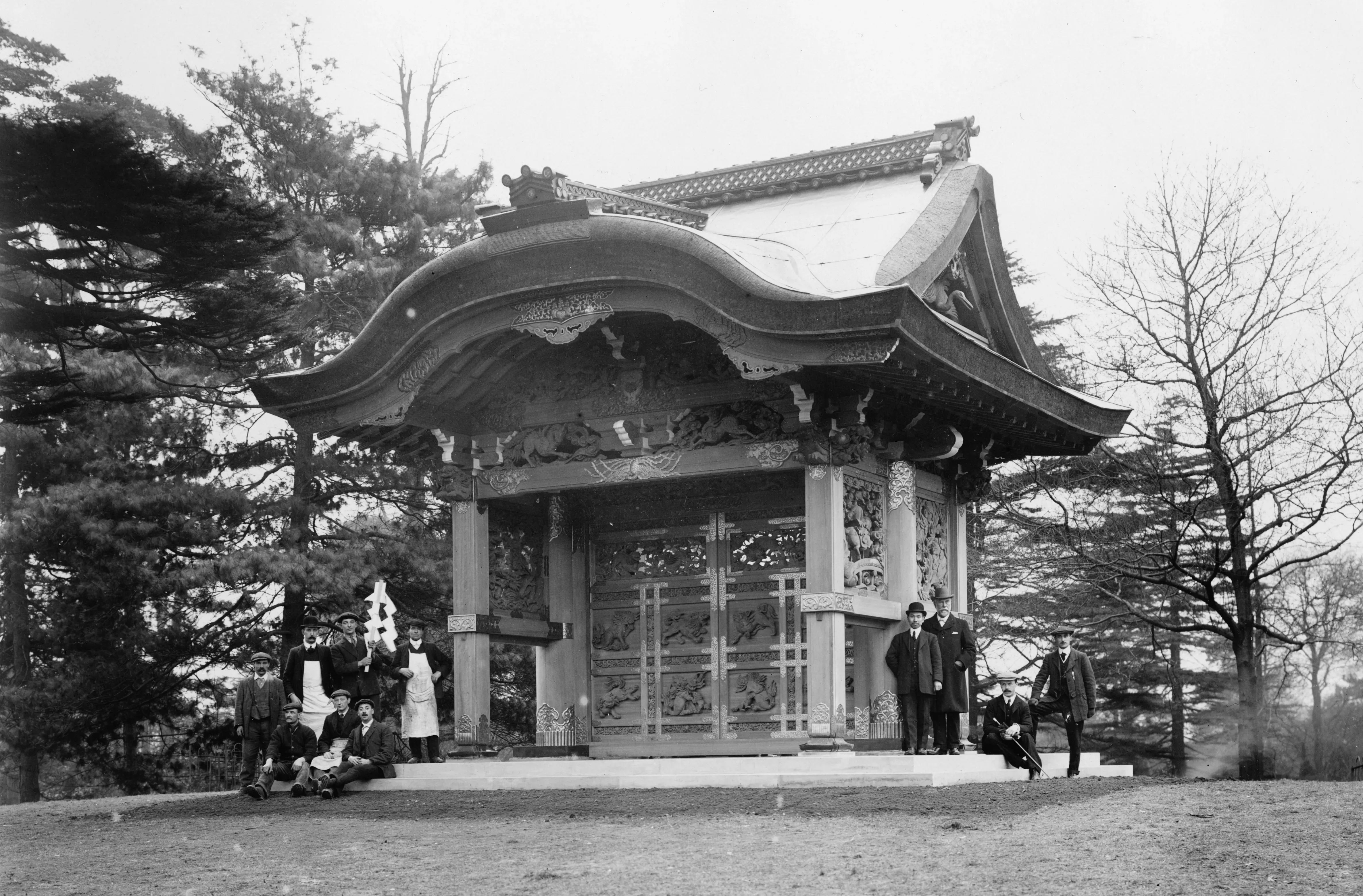
3. Gateway revival
After more than eight decades at Kew, our Chokushi-Mon was in need of some TLC.
A restoration project started in October 1994 and was completed in November 1995, using a mix of traditional Japanese skills and modern innovative techniques.
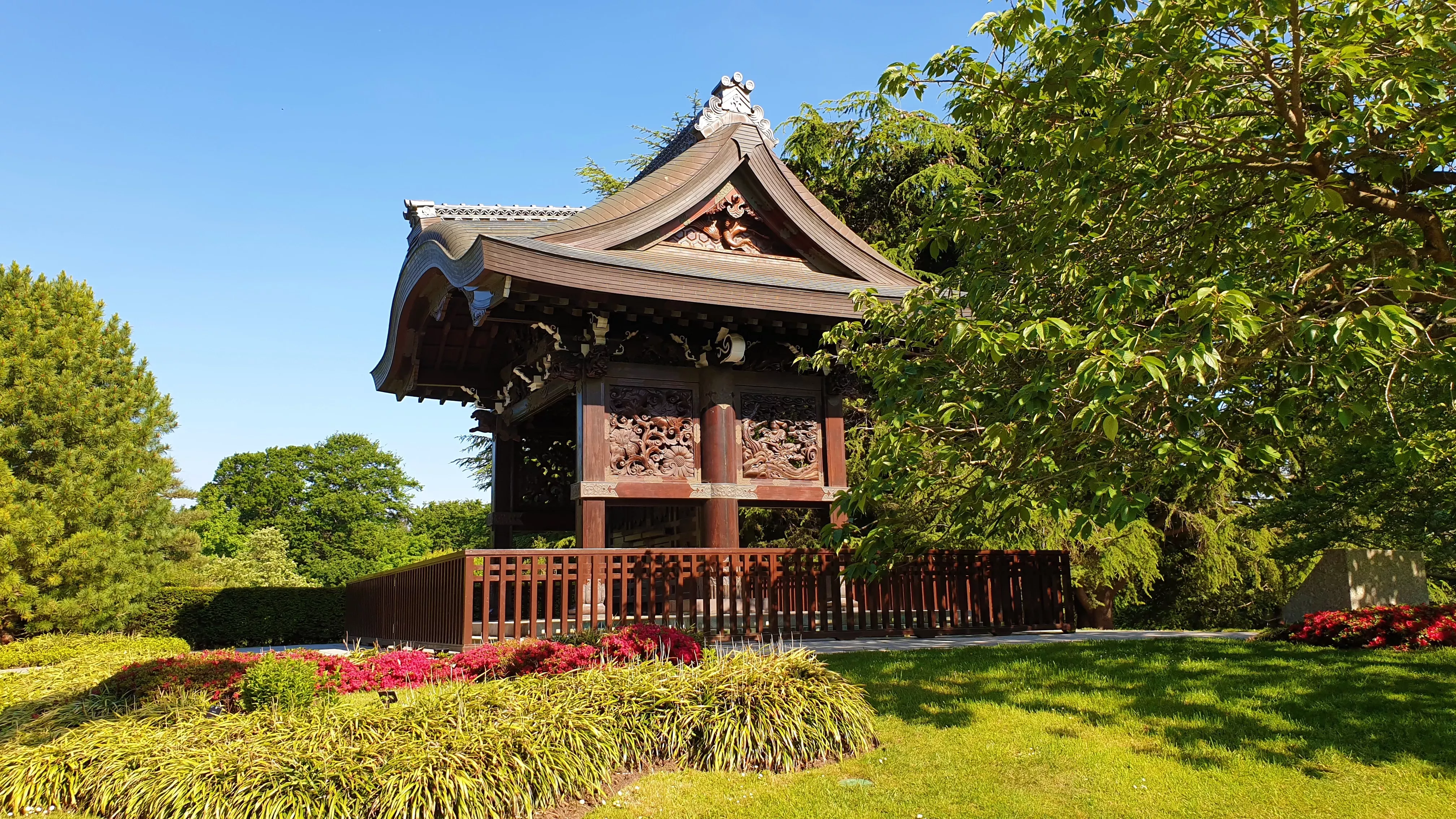
4. Hinoki handiwork
The Gateway is made of Japanese hinoki cypress (Chamaecyparis obtusa). Its traditional copper roof replaced the original made of cedar bark. Look out for the intricate carvings in the woodwork of animals, flowers, plants and human figures.
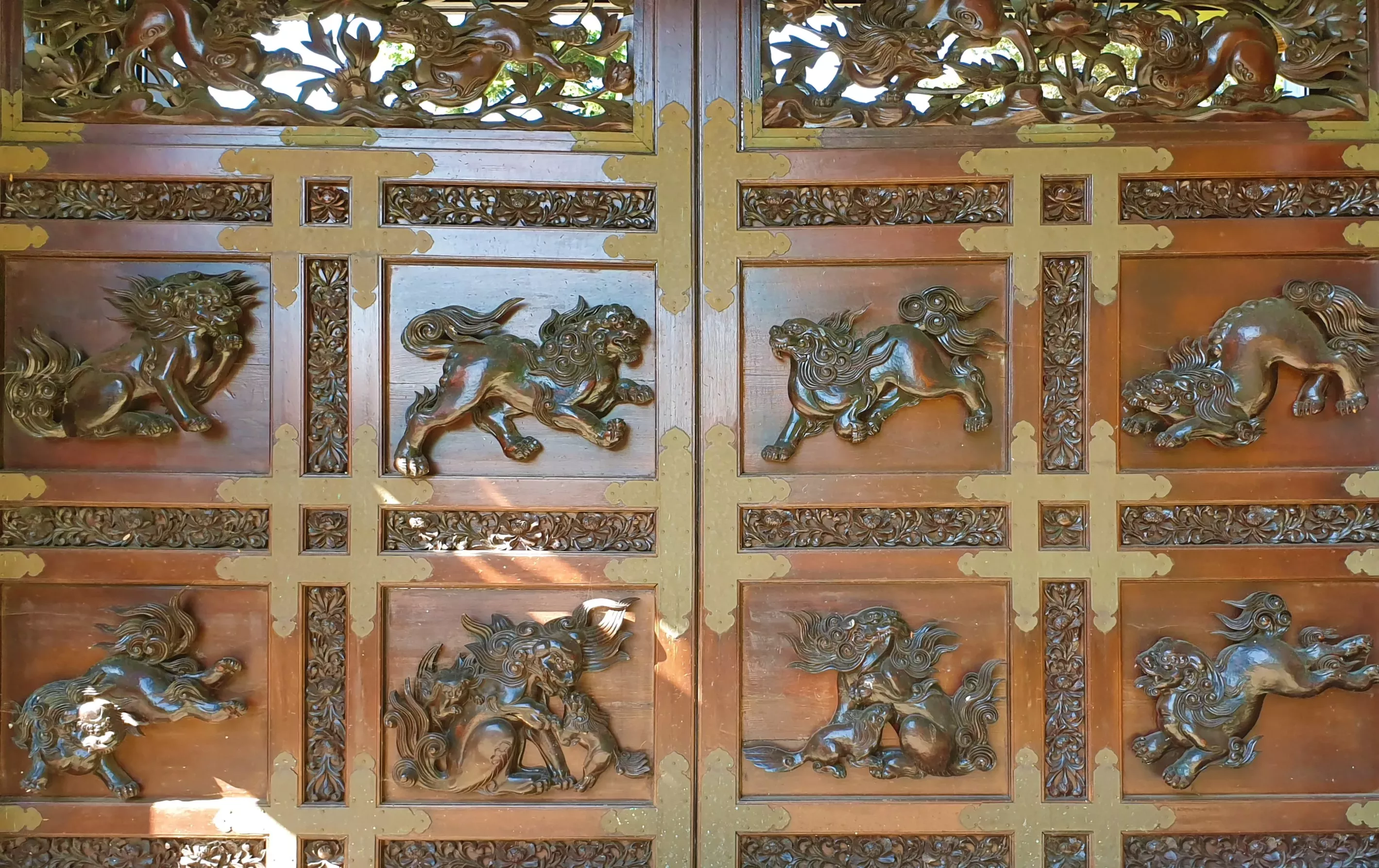
5. A royal visitor
Her Imperial Highness Princess Sayako opened the restored Japanese Gateway and newly created landscape in 1996.
To mark the occasion, she planted a northern Japanese magnolia (Magnolia kobus) in the setting, which still grows here today.
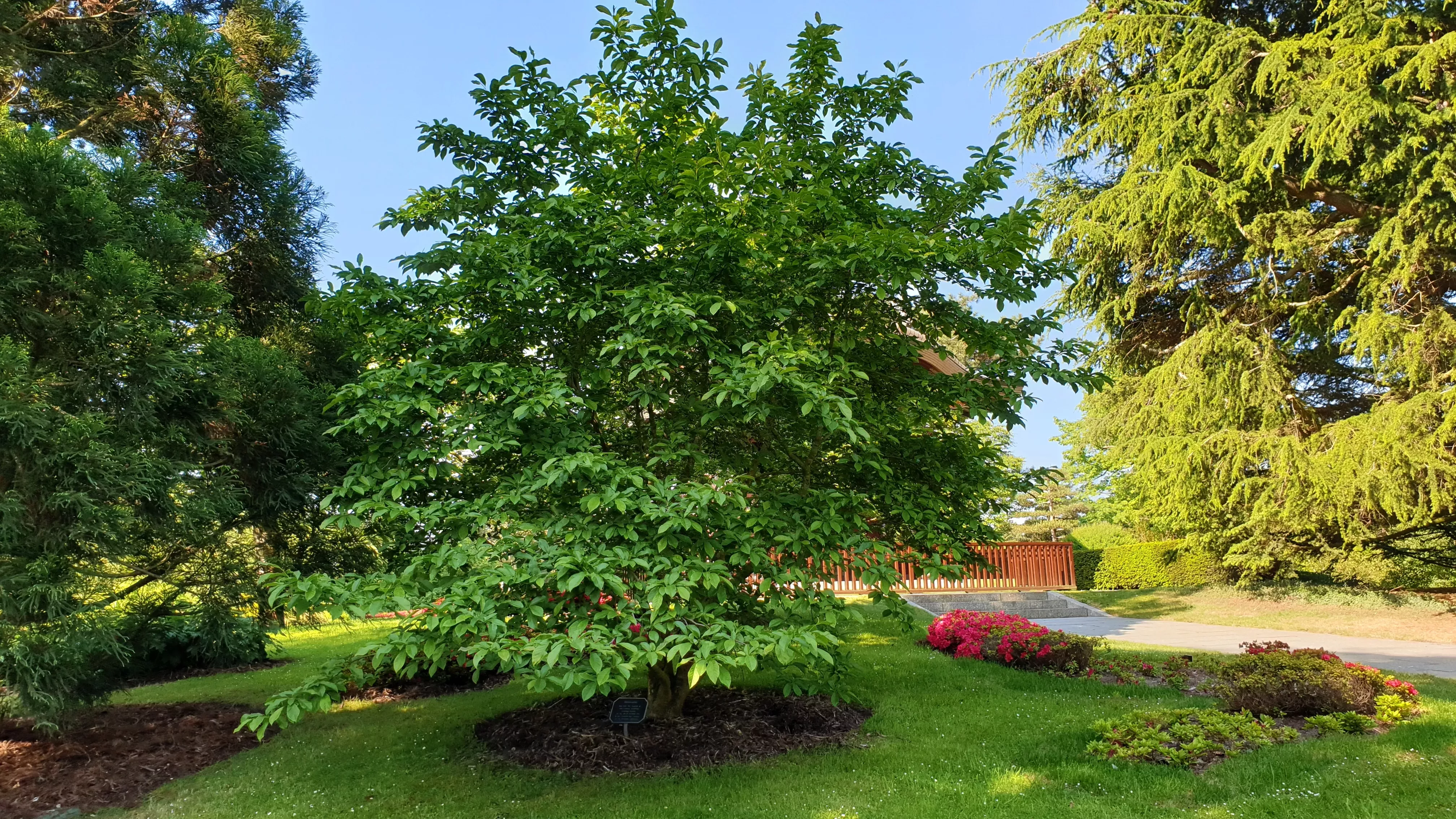
6. Raking ripples
Around 17 tonnes of gravel were used to complete the landscape – that's about the same weight as three African elephants!
Our botanical horticulturists rake the gravel once a week into wave, circular and straight-line patterns, symbolising the movement and ripples of water, using a Kew-made wooden rake.
It takes around one hour to finish but longer in autumn as fallen leaves need to be removed with a leaf blower first.
Watch the film below to see how the raking is done...
7. Celebrating the autumn full moon
Each year in September or October depending on the lunar calendar, the gravel is raked into a chequerboard pattern to celebrate the Japanese tradition of autumn moon viewing known as ‘Tsukimi’.
This special design and the shadows it casts in moonlight are said to traditionally represent rice fields at harvest time.
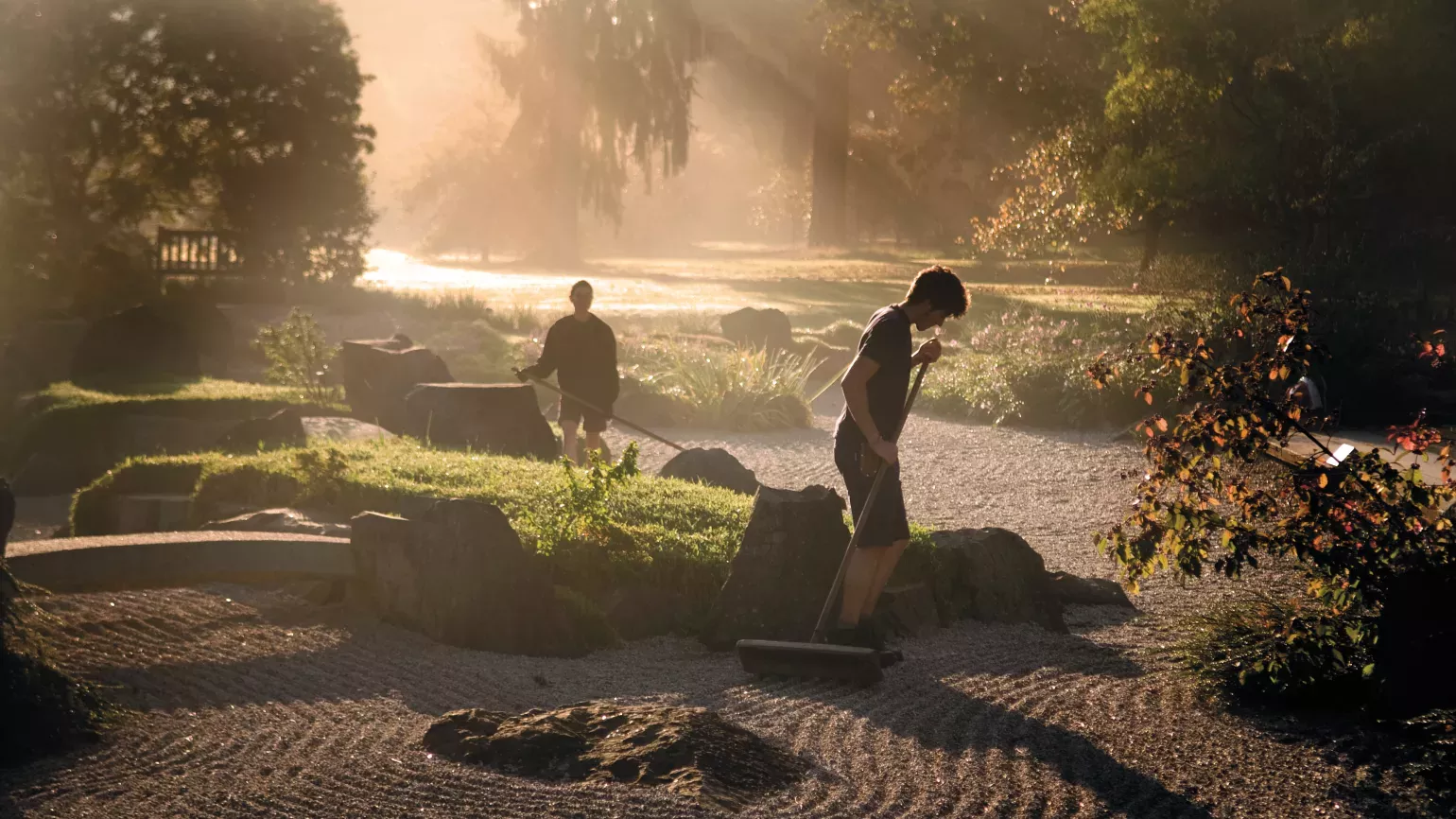
8. A rainbow of colour
Japanese plant species fill the gardens, adding a spectrum of colours and beauty throughout the seasons.
In spring you’ll find pretty pink and white cherry blossom and deep pink Rhododendron 'Mother’s Day'.
Summer reveals the pink flowers of Japanese anemone (Anemone x hybrida) and the fire engine red of Neoshirakia japonica.
For a striking contrast, Enkianthus campanulatus shows off its elegant white flowers in summer and bright red leaves in autumn.
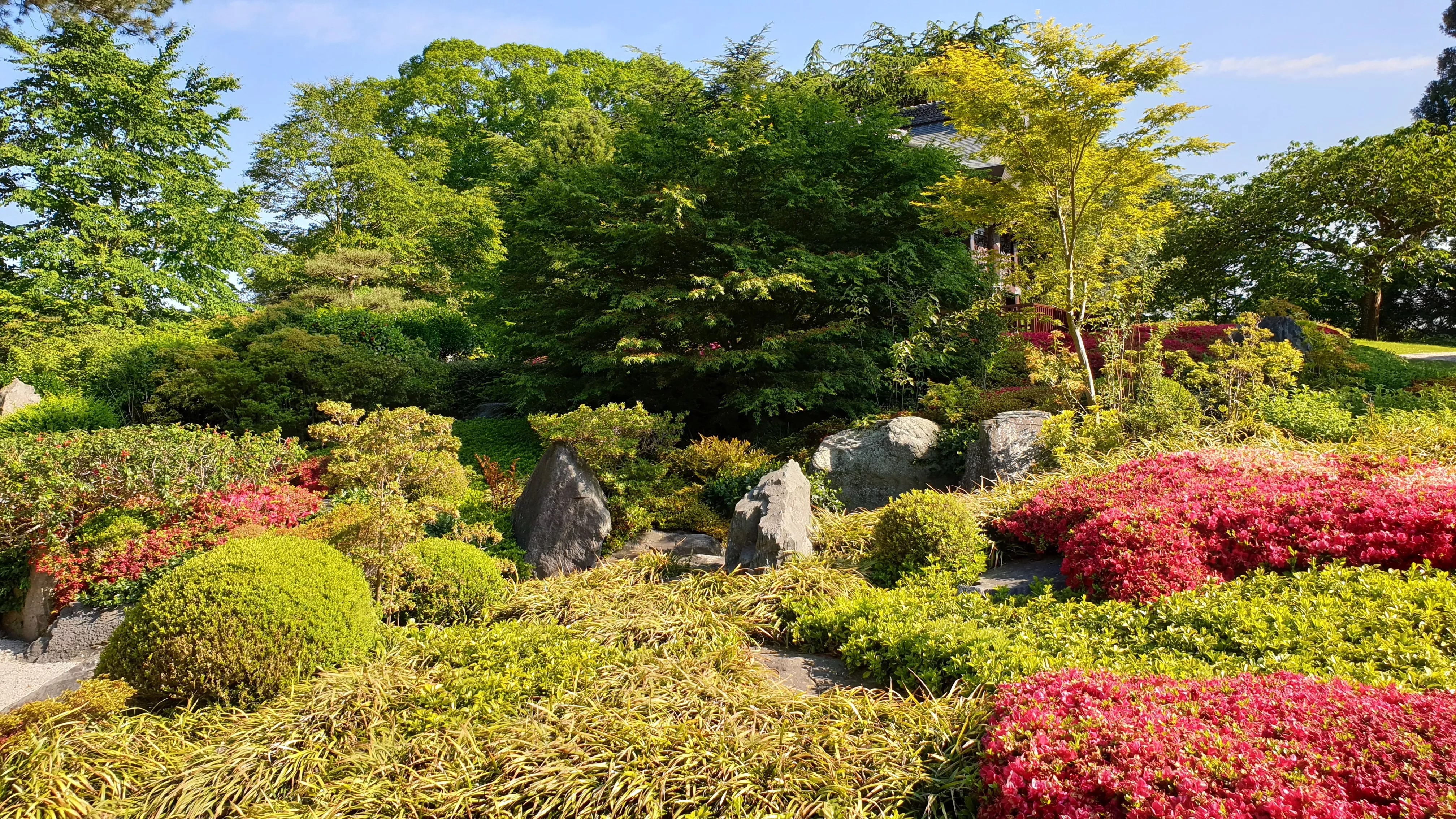
9. Balloon buds
One of the most unique plants in the landscape is the balloon flower (Platycodon grandifloras). As you might guess from its name, the herbaceous perennial has large buds that look like puffed up balloons, which open into cup-shaped blue flowers.
10. Back from extinction
The great white cherry (Prunus 'Taihaku') that grows next to the Gateway was a species thought to be extinct in Japan in the 1920s. That was until English plant collector Collingwood 'Cherry' Ingram noticed a match between a painting of a white cherry he was shown on a trip to Japan and a tree growing in Sussex at the time.
After taking cuttings, Ingram re-introduced the species to the world of horticulture. He also introduced many other species of cherries to the UK.
Can you spot the three cherries named after him in our Japanese gardens?
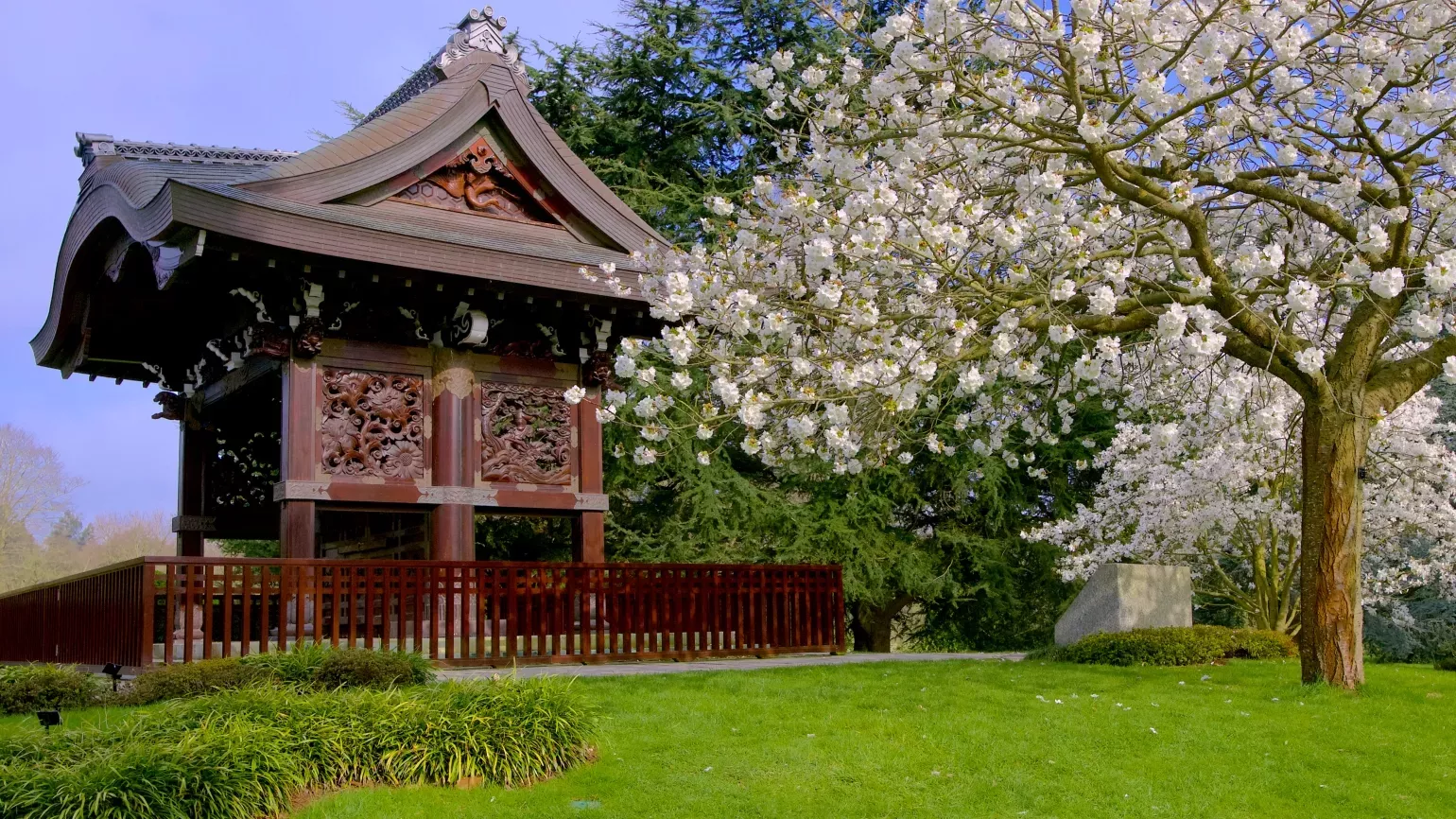
11. Poetical nature
One stone in the gardens has a haiku (a traditional short form of Japanese poetry) carved into its surface.
This haiku was composed in 1936 by Japanese poet Kyoshi Takahama and reads ‘Even Sparrows/ Freed from all fear of man/ England in Spring’.
The stone was added to the landscape in 1979 by the poet's daughter Haruko.

